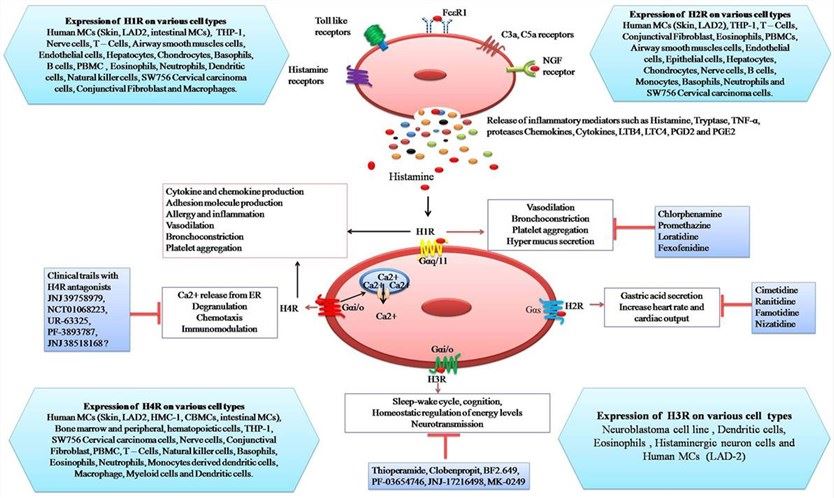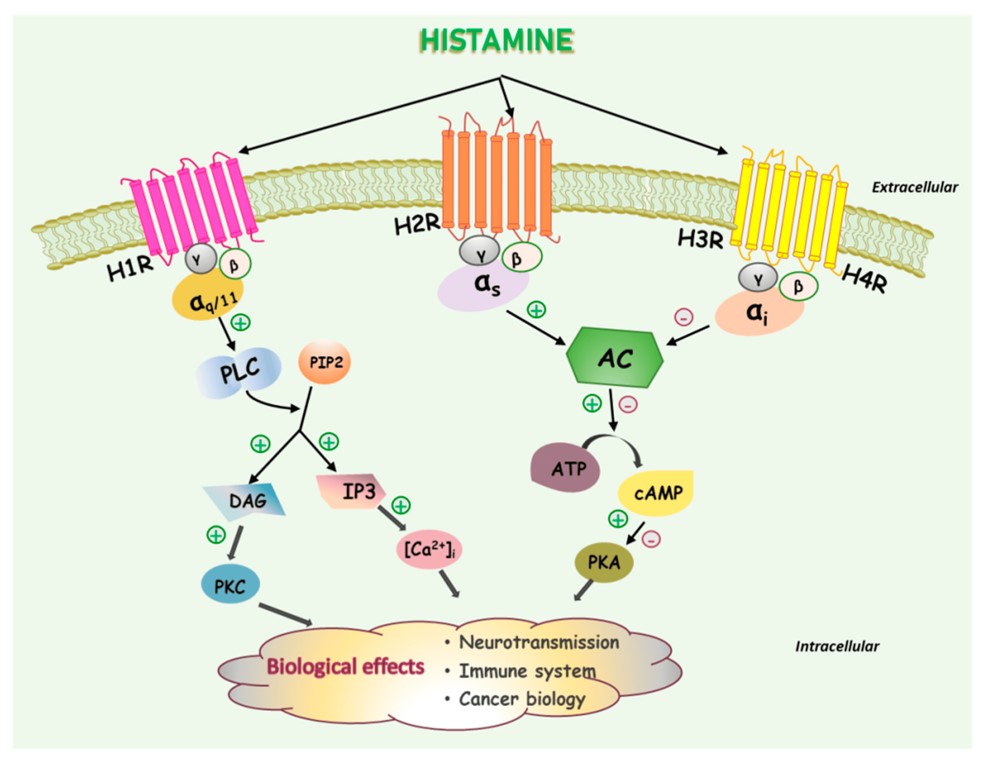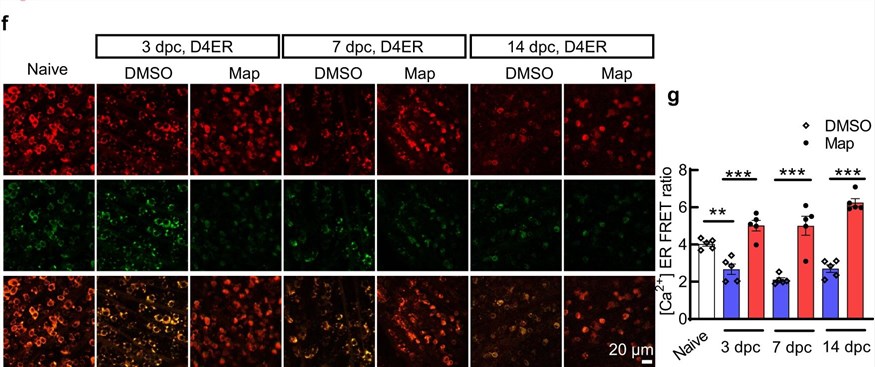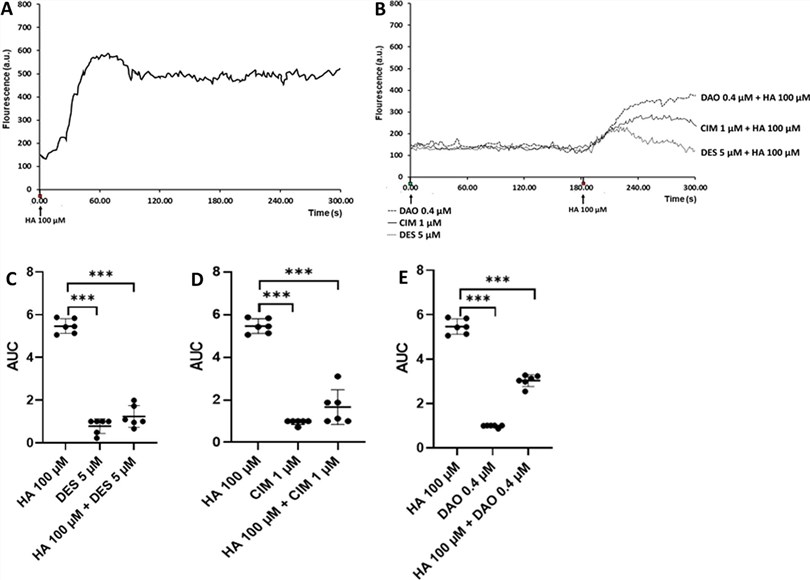Hi-Affi™ In Vitro Cell based Histamine Receptor Functional Assay Service
Histamine Receptors with Prospect
Histamine receptor (H1R-H4R) is a subtype of G protein-coupled receptor that attracts histamine as the majority of its endogenous ligand. The receptors are extensively dispersed throughout the body and play a pivotal part in the occurrence of numerous allergy disorders. Noteworthy, histamine receptors have been targeted by drugs with anti-inflammatory, anti-ulcer, and sleep-inducing characteristics in the clinic. In the future, histamine receptors might be used as therapeutic targets for disorders such as schizophrenia. Therefore, advancing the development of a functional assay for histamine receptors has great meaning.
 Fig.1 Histamine receptor expression on mast cells and their possible sensitivity to histamine.1
Fig.1 Histamine receptor expression on mast cells and their possible sensitivity to histamine.1
Our Hi-Affi™ In Vitro Cell-based Histamine Receptor Functional Assay Service
Creative Biolabs combines in vitro cell-based assay with histamine receptors functional assay and has successfully developed an efficient and robust Hi-Affi™ in vitro cell-based histamine receptor functional assay service. We measure second messenger accumulation and calcium flux in response to histamine receptor-ligand interactions, which is based on the fact that H2 receptors paired with Gs evoke cAMP accumulation, H3 and H4 receptors connected to Gi/o prevent cAMP accumulation, and H1 receptors coupled to Gq regulate Ca2+ mobilization.
Creative Biolabs consistently develops and innovates the technological platform in order to meet market demand, aiming to supply the most advanced technology and top-quality services to global customers. Accordingly, our Hi-Affi™ in vitro cell-based histamine receptor functional assay service will benefit global customers with:
- A Broad Range of Cell Lines
- Efficient and Robust Experiment System
- Highly competent Expert Teams
- Comprehensive Customized Services
 Fig.2 Mechanisms that mediate the biological effects of different subtypes of histamine receptors.2
Fig.2 Mechanisms that mediate the biological effects of different subtypes of histamine receptors.2
Representative Data
Data 1: This study evaluated intra-ER Ca2+ levels by producing a FRET-based ER Ca2+ sensor, D4ER, regulated by the mSncg promoter, in mouse retinal ganglion cells (RGCs) specifically, in order to definitely confirm the effective blockage of Ca2+ inflow by an antidepressant, probably by suppression of histamine receptor H1-mediated Ca2+ release from the ER.
The findings revealed that optic nerve crush (ONC) drastically reduced ER Ca2+ concentrations in RGCs, but an antidepressant maintained ER Ca2+ concentrations at considerably greater levels.
 Fig.3 Ex vivo measurement of ER Ca2+.3
Fig.3 Ex vivo measurement of ER Ca2+.3
Data 2: Fluorescence studies of intracellular Ca2+ levels revealed that histamine triggered Ca2+ mobilization. The co-treatment of cells with histamine and the antihistamines DES or CIM resulted in a significant reduction. These findings support the concept that H1 and H2 are present in P19 neurons and play a role in histamine-induced Ca2+ mobilization. The addition of vegetal diamine oxidase (vDAO) reduced the Ca2+ signal elicited by histamine, which should be related to the oxidative breakdown of histamine by this enzyme.
 Fig.4 The impact of vDAO, histamine, and antihistamine medications on the intracellular calcium concentrations of P19 neurons.4
Fig.4 The impact of vDAO, histamine, and antihistamine medications on the intracellular calcium concentrations of P19 neurons.4
Work with Creative Biolabs
Creative Biolabs consistently develops and innovates the technological platform in order to meet market demand, aiming to supply the most advanced technology and top-quality services to global customers. If you're interested in learning more about our Hi-Affi™ in vitro cell-based histamine receptor functional assay service, please don't hesitate to contact us. Everyone here is excited to start working with you immediately.
References
-
Thangam, Elden Berla, et al. "The role of histamine and histamine receptors in mast cell-mediated allergy and inflammation: the hunt for new therapeutic targets." Frontiers in Immunology 9 (2018): 1873.
Distributed under Open Access License CC BY 4.0, without modification. -
Nguyen, Phuong Linh, and Jungsook Cho. "Pathophysiological roles of histamine receptors in cancer progression: implications and perspectives as potential molecular targets." Biomolecules 11.8 (2021): 1232.
Distributed under Open Access License CC BY 4.0, without modification. -
Chen, Wei, et al. "Maprotiline restores ER homeostasis and rescues neurodegeneration via Histamine Receptor H1 inhibition in retinal ganglion cells." Nature Communications 13.1 (2022): 6796.
Distributed under Open Access License CC BY 4.0. The original image was modified by extracting and using parts f and g, and the title was changed to "Ex vivo measurement of ER Ca2+". -
Perez, Mariela Gomez, et al. "P19-derived neuronal cells express H1, H2, and H3 histamine receptors: a biopharmaceutical approach to evaluate antihistamine agents." Amino Acids (2023): 1-13.
Distributed under Open Access License CC BY 4.0, without modification.
For Research Use Only.
